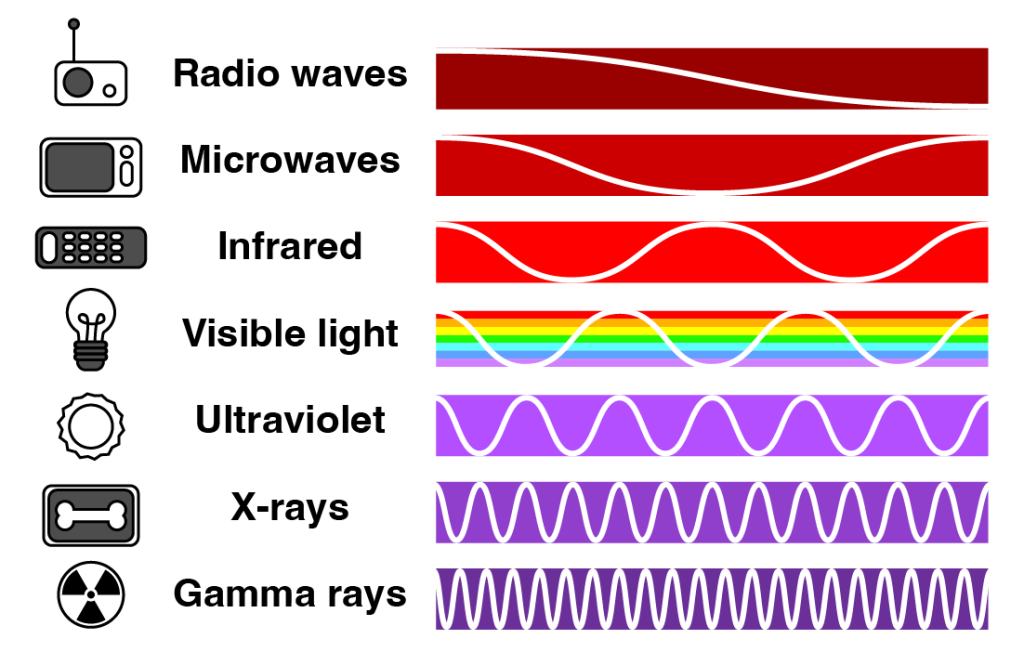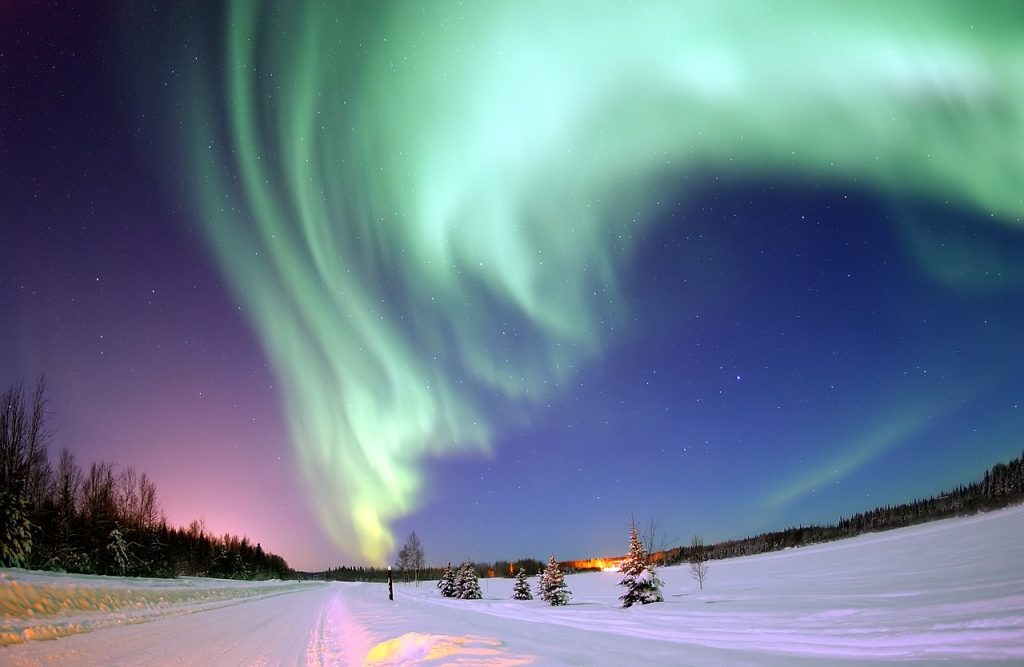Light: electromagnetic radiation
Light is a form of electromagnetic radiation. We often talk about light as waves because light is made from energy that is radiated in a wave pattern, but light also has properties that are like particles. Sometimes light behaves like waves and sometimes it behaves like particles. This may sound confusing – it is!
Watch this video to learn more about the weird physics of light waves and particles (approximately 10 minutes).
You can also read the article here.
For Colour Theory, we refer to light as waves to describe how light forms different wavelengths that we see as colours. Wavelength is the distance between each wave of light energy – and as shown in Figure 2.3, it is measured in nanometres. A nanometre is one billionth of a metre, 0.000000001 or 10–9 metres.
Electromagnetic spectrum

The energy of a light wave is similar to that of a particle moving at the speed of light. However, even the smallest particles would not be able to travel at such high speeds in reality.
The term photon is used to represent the smallest quantity of light from any wavelength. It’s also called a light quantum – an idea that began with Albert Einstein. The energy of a photon depends on the wavelength. Ultraviolet, X-rays and Gamma rays have the most energy and the shortest wavelengths. Radio waves, Microwaves and Infrared have the lowest energy and the longest wavelengths. The visible spectrum sits in between these wavelengths and is only a small part of the whole electromagnetic spectrum.
Colour is how we define specific wavelengths in the visible spectrum. For example, red light has wavelengths from approximately 630 to 700 nanometres. Blue light wavelengths are approximately 450 to 500 nanometres. It’s difficult to say where one colour ends and another colour begins. Our definitions of colour by wavelength are based on our perception of colour with human eyes, and our classification of six main colours in the spectrum.

Interesting Fact: Auroras

Auroras like the Aurora Borealis (Northern Lights) and Aurora Australis (Southern Lights) are natural phenomena that occur near the North and South Poles of the Earth. Auroras are shimmering patterns of coloured lights that appear in the sky – usually in winter, when the sky is darkest at the poles.
Auroras are nothing like rainbows (which are caused by refraction), they are made from electromagnetic radiation (light) that is emitted when solar wind particles collide with charged particles in the earth’s outer atmosphere – the magnetosphere plasma. Sun events like coronal ejections can cause more of these disturbances.
Auroras can occur on satellites, comets, and on other planets.
Learn more about the physics of light and colour and the history of theories of light.
The speed of light (in a vacuum) is defined as exactly 299,792,458 metres per second

